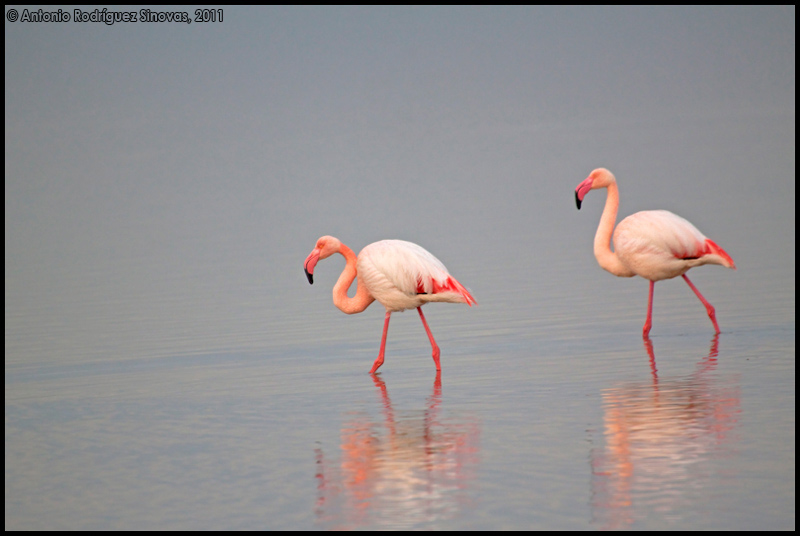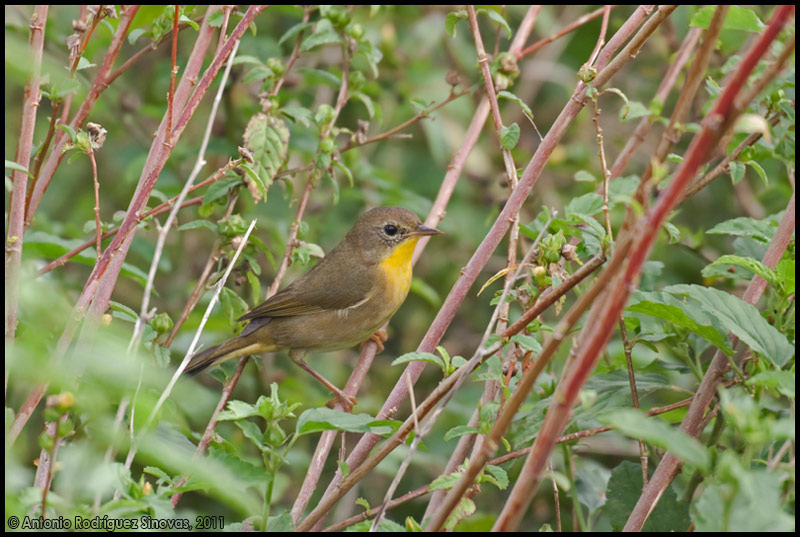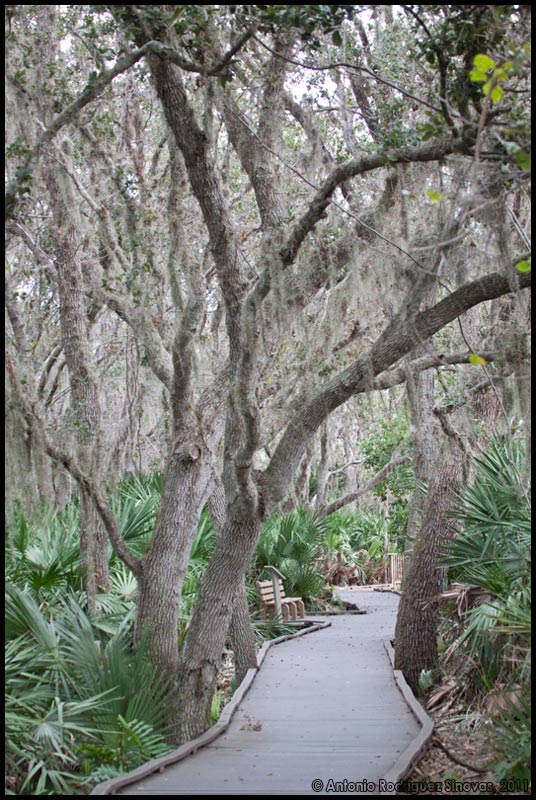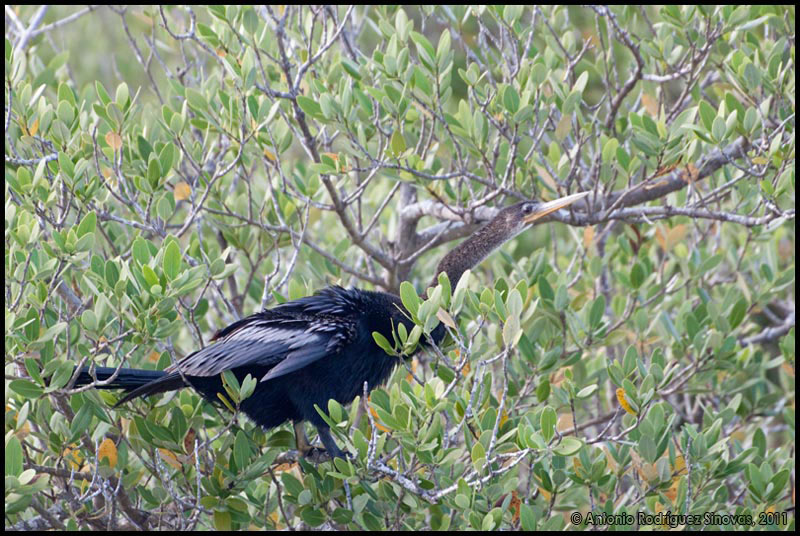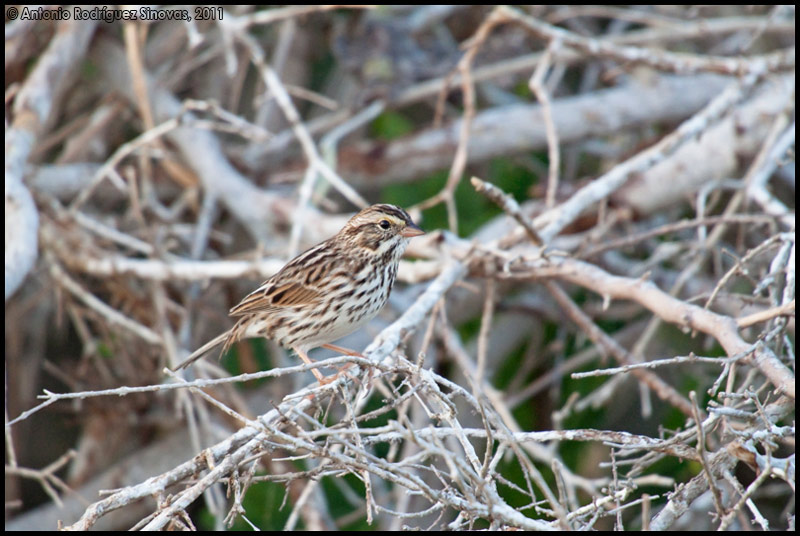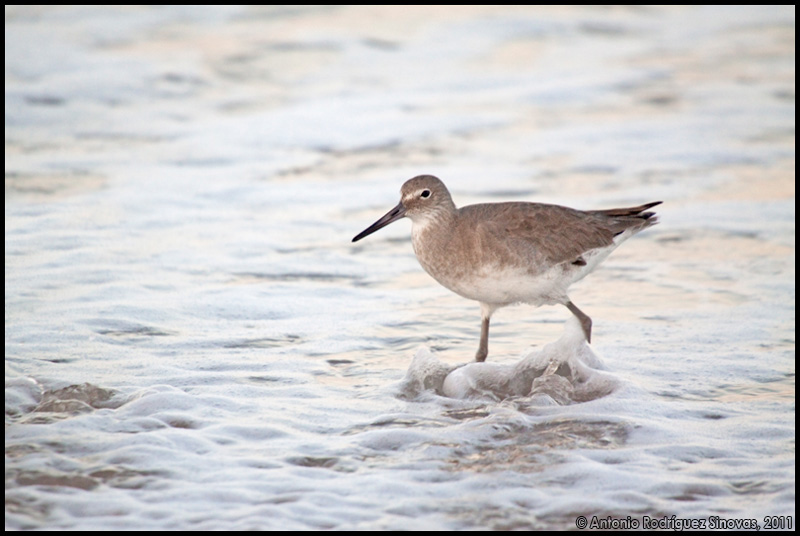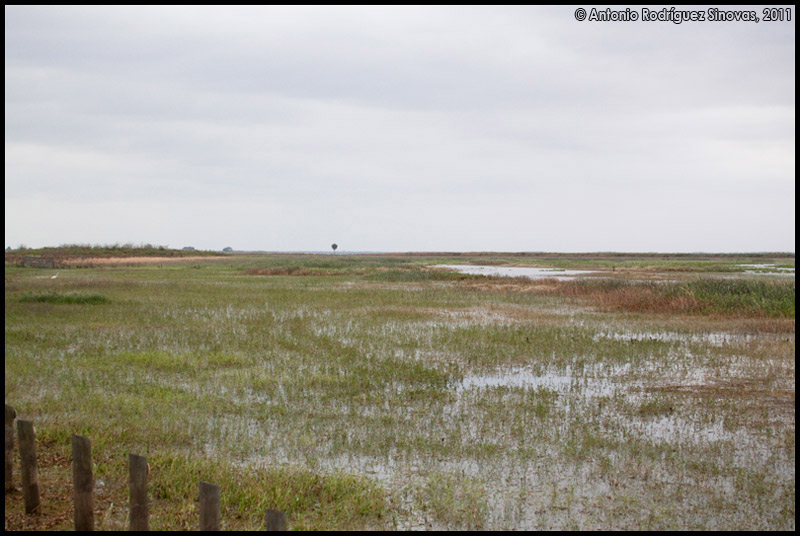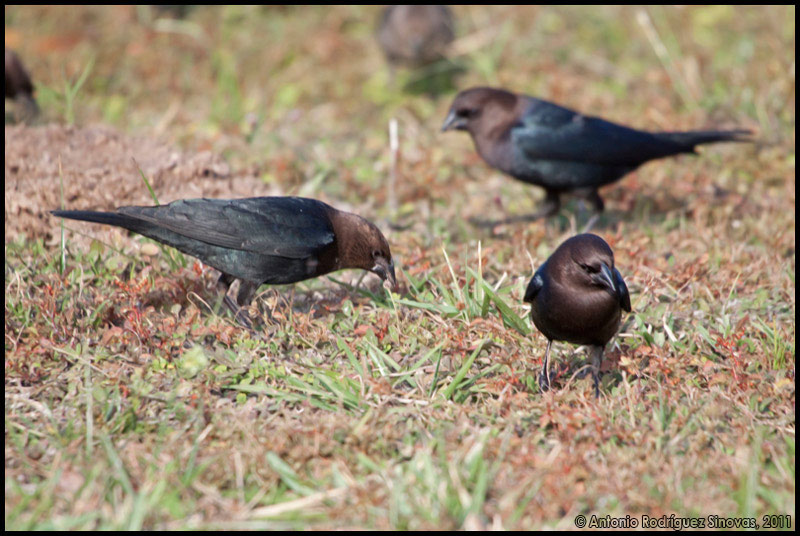Este noviembre tuve que acudir de nuevo a Orlando, para asistir a un congreso científico. Una gran oportunidad que había que aprovechar. Así que me quedé un par de días más, después del mismo, para visitar algunas zonas interesantes cercanas. Recomendaría visitar la web del
Great Florida Birding Trail, para conocer zonas cercanas interesantes. Otra web que me sirvió de gran ayuda, ya que recomienda puntos cercanos a Orlando buenos para observación y fotografía de aves es la de
Mansurovs Photography.
Last November I had to go to a scientific meeting in Orlando. This offered me a great opportunity. I extended my stay two days more, to visit some nearby interesting areas. I recommend you to visit the Great Florida Birding Trail web page, to know good birding spots in the area. I also recommend you the Mansurovs Photography web page, in which the author indicates some good places for birding and photography around Orlando.
1. Orlando.
Durante los días del congreso visité zonas ajardinadas cercanas al International Drive, la calle donde se localizan la mayoría de hoteles. Increíble la variedad de especies, para una zona tan habitada. Me moví sobretodo por el Little Sand Lake y por una zona ajardinada cercana a Universal Blvd.
During the meeting I visited some garden areas near International Drive. Most of the hotels are located in this street. It is incredible the variety of species, despite this is a very crowded area. I moved specially to Little Sand Lake and to gardens around Universal Blvd.
Plano de Orlando
Ardilla gris / Eastern gray squirrel (Sciurus carolinensis)
Mosquero fibí / Eastern phoebe (Sayornis phoebe)
Pato joyuyo / American wood duck (Aix sponsa)
Reinita palmera / Palm warbler (Setophaga palmarum)
Gavilán americano / Sharp-shinned hawk (Accipiter striatus)
Garceta grande / Great white egret (Ardea alba)
Garceta tricolor / Tricolored heron (Egretta tricolor)
Chupasavia norteño / Yellow-bellied sapsucker (Sphyrapicus varius)(juvenil)
Tántalo americano / Wood stork (Mycteria americana)
Chara azul / Blue jay (Cyanocitta cristata)
Sisonte norteño / Northern mockingbird (Mimus polyglottos)
Cardenal norteño / Northern cardinal (Cardinalis cardinalis)
Gulf fritillary (Agraulis vanillae)
Zebra longwing (Heliconius charithonia)
Obscure bird grasshopper (Schistocerca obscura, female)
2. Blue Springs State Park (16/Nov./2011).
El primer día que tuvimos libre nos fuimos a visitar Blue Springs State Park. Los manatíes pasan los días invernales en las cálidas aguas de esta surgencia subterránea. También la observación de aves es excelente. Descender desde la surgencia hasta la unión de sus aguas con el St. Johns River, por el sendero habilitado (unos 5-10 minutos de caminata), puede permitir ver fochas, anhingas, cormoranes y paseriformes. Hay también un sendero de 4 millas que se adentra en un bosque denso de pinos con marismas. La mejor época para visitar el refugio es entre marzo y abril y entre octubre y diciembre.
The first free day, at the afternoon, we moved to Blue Springs State Park. Overwintering manatees are a big draw at this park, but birding is also excellent. Walking through the spring boardwalk may allow to see coots, anhingas, cormorants and warblers. There is also a 4 mile trail that explores sand pine scrub, pine flatwoods and marsh. The best time to visit is between march and april, and between october and december.
Ruta de Orlando a Blue Springs State Park

Plano de Blue Springs State Park
Blue Springs State Park
Blue Springs State Park
Manatí / West Indian manatee (Trichechus manatus)
Manatí / West Indian manatee (Trichechus manatus)
Mapache común / Northern raccoon (Procyon lotor)
Ardilla gris / Eastern gray squirrel (Sciurus carolinensis)
Aura gallipavo / Turkey vulture (Cathartes aura)
Aura gallipavo / Turkey vulture (Cathartes aura)
Zopilote negro / American black vulture (Coragyps atratus)
Busardo hombrorrojo / Red-shouldered hawk (Buteo lineatus)
Anhinga americana / Anhinga (Anhinga anhinga)
Cormorán orejudo / Double-crested cormorant (Phalacrocorax auritus)
Pseudemys spp.
3. Merritt Island National Wildlife Refuge (17/Nov./2011).
Imprescindible visita situada a aproximadamente una hora en coche de Orlando. Buena zona para ver anátidas, garzas y limícolas. La mejor época para visitar el refugio es en invierno, entre octubre y marzo.
This is an essential visit, at one hour by car of Orlando. Good area to see ducks, egrets and sandpipers and the like. The best time to visit is between october and march.
Ruta de Orlando a Merritt Island National Wildlife Refuge

Plano de Merritt Island National Wildlife Refuge
(Los puntos rojos indican las diferentes paradas)
(Red dots indicate the different stops)
3.A. Parrish Park.
Justo al inicio del puente que cruza desde Titusville a Merritt Island. Buenas vistas de la Indian River Lagoon, con posibilidades de observar patos, limícolas, vuelvepiedras, charranes y gaviotas, así como delfines.
Just at the beginning of the bridge between Titusville and Merritt Island. This point allows to enjoy Indian River Lagoon with views of ducks, shorebirds, turnstones, terns and gulls. Also it is possible to see dolphins.
Tántalo americano / Wood stork (Mycteria americana)
Gaviota guanaguanare / Laughing gull (Leucophaeus atricilla)
Garza azulada / Great blue heron (Ardea herodias)
Zanate cola de bote / Boat-tailed grackle (Quiscalus major)
Vuelvepiedras común / Ruddy turnstone (Arenaria interpres)
3.B. Inicio de Gator Creek Rd.
Justo al final del puente. No llegué a moverme por Gator Creek Rd., salvo un corto recorrido a pie, pero pude disfrutar de águila pescadora y buitres, así como de martín gigante norteamericano.
Just at the end of the bridge. I did not move into Gator Creek Rd., except for a short walk, but I managed to enjoy with osprey, vultures and belted kingfisher.
Águila pescadora / Osprey (Pandion haliaetus)
Garceta azul / Little blue heron (Egretta caerulea)
Martín gigante norteamericano / Belted kingfisher (Megaceryle alcyon)
Mascarita común / Common yellowthroat (Geothlypis trichas)
3.C. Hacia el Visitor Information Center.
No había demasiado en el centro de visitantes, pero de camino sí se dejaron ver algunas anátidas. En el centro hay una laguna con algunos paseriformes, aligators y un bonito bosque cubierto de musgo.
Not too much to see in the Visitor Center, but in the way there were some interesting ducks. There is an small lake inside the visitor center, with passerines, alligators and a beautiful small forest with spanish moss.
Boadwalk at Visiton Information Center
Porrones americano y bola / Redhead and lesser scaups (Aythya americana y A. affinis)
3.D. Black Point Wildlife Drive.
Imprescindible. Conducir por Black Point (carretera sin asfaltar en buen estado) permite ver rálidos, anátidas, como ánade rabudo o cercetas, y diferentes garzas, además de los lances de los aguiluchos pálidos persiguiendo limícolas.
Essential. Driving Black Point (unpaved road) allows to see rails, ducks, like pintails or teals, egrets and herons, and how harriers flush shorebirds.
Garceta nívea / Snowy egret (Egretta thula)
Garceta grande / Great white egret (Ardea alba)
Garceta tricolor / Tricolored heron (Egretta tricolor)
Ibis blanco / American white ibis (Eudocimus albus)
Cerceta aliazul / Blue-winged teal (Spatula discors)
Silbón americano / American wigeon (Mareca americana)
Ánade rabudo / Northern pintail (Anas acuta)
Ánade friso / Gadwall (Anas strepera)
Zampullín picogrueso / Pied-billed grebe (Podilymbus podiceps)
Cormorán orejudo / Double-crested cormorant (Nannopterum auritus)
Anhinga americana / Anhinga (Anhinga anhinga)
Focha americana / American coot (Fulica americana)
Carpintero de Carolina / Red-bellied woodpecker (Melanerpes carolinus)
Columbina común / Common ground-dove (Columbina passerina)
3.E. Scrub Trail.
Buen sitio para migrantes. Suelen verse charas floridanas (un córvido cuya distribución está restringida a Florida), posados en los postes e hilos telefónicos. Yo no pude verlos, pero sí, a cambio, algunos limícolas, además de nubes inmensas de mosquitos que, seguro, se alimentaron bien.
Good birding spot for migrants. Florida scurb-jays can be seen perching on telephone wires and posts. I did not manage to see them, but instead I could see some shorebirds. Also lots of mosquitos that ended well feeded.
Correlimos común / Dunlin (Calidris alpina)
Carpintero de Carolina / Red-bellied woodpecker (Melanerpes carolinus)
Reinita coronada / Yellow-rumped warbler (Setophaga coronata)
3.F. Bio Lab Rd.
Recién abierta al tráfico, tras las reparaciones posteriores a la época de lluvias. Buena carretera, sin asfaltar, para ver limícolas. Permite ver la Mosquito Lagoon
Just open to traffick after the wet season. Good unpaved road to see shorebirds. It is possible to see Mosquito Lagoon.
Correlimos común / Dunlin (Calidris alpina)
Correlimos de Alaska / Western sandpiper (Calidris mauri)
Correlimos menudillo / Least sandpiper (Calidris minutilla)
Martín gigante norteamericano / Belted kingfisher (Megaceryle alcyon)
Chingolo sabanero / Savannah sparrow (Passerculus sandwichensis)
3.G. Playa Linda Beach.
Ya atardeciendo, pero todavía con algunas especies interesantes. Playa larguísima y con poca gente, en la que distintos limícolas se movían a sus anchas.
I arrived at dusk, but still some interesing species. A long beach with few people, in which different shorebirds were free to move.
Playa Linda Beach
Correlimos tridáctilo / Sanderling (Calidris alba)
Vuelvepiedras común / Ruddy turnstone (Arenaria interpres)
Playero aliblanco / Willet (Tringa semipalmata)
4. Joe Overstreet Rd., Kissimmee Lake y Three Lakes Wildlife Management Area (18/Nov./2011).
A medida que uno se mueve por Joe Overstreet Rd. (carretera sin asfaltar, pero ancha y en buen estado) hay que ir mirando en los pastos para localizar grullas canadienses o pavos. En los postes es posible ver praderos orientales, caracaras y pigargos americanos. Una vez en el lago Kissimmee pueden aparecer carraos, limícolas y patos, así como caracolero comunes (es zona de cría de esta rapaz amenazada). La visita merece la pena durante todo el año.
As you drive down Joe Overstreet Rd. (unpaved road, but in goog conditions), look in the pastures for sandhill cranes and turkeys, and on the fenceposts for meadowlarks, bald eagles, and crested caracaras. At the end, in the Kissimmee lake, it is possible to check for limpkins, waders, ducks and snail kites. Interesting to visit year-round.
Ruta de Orlando a Joe Overstreet Rd. y Three Lakes Wildlife Management Area
Kissimmee Lake al final de Joe Overstreet Rd.
Pradero oriental / Eastern meadowlark (Sturnella magna)
Tordo cabecipardo / Brown-headed cowbird (Molothrus ater)
Grulla canadiense / Sandhill crane (Antigone canadensis)
Grulla canadiense / Sandhill crane (Grus canadensis)
Pigargo americano / Bald eagle (Haliaeetus leucocephalus)
Busardo hombrorrojo / Red-shouldered hawk (Buteo lineatus) (juvenil)
Caracara carancho / Crested caracara (Caracara plancus)
Cernícalo americano / American kestrel (Falco sparverius)
Garcilla bueyera / Cattle egret (Bubulcus ibis)
Morito común / Glossy ibis (Plegadis falcinellus)
Ánade moteado / Mottled duck (Anas fulvigula)
Focha americana / American coot (Fulica americana)
Chorlitejo culirrojo / Killdeer (Charadrius vociferus)
Sargento alirrojo / Red-winged blackbird (Agelaius phoeniceus)
Aligator americano / Alligator (Alligator mississippiensis)
Al caer la tarde, me acerqué al Three Lakes Wildlife Management Area, a unos 5 minutos en coche del Joe Overstreet Rd. No me dió tiempo a hacer demasiada cosa, pero me pareció una zona interesante, con aspecto sabanoide, formada por pinos.
At dusk I moved to the Three Lakes Wildlife Management Area, at about 5 minutes by car from Joe Overstreet Rd. I could not see to much, but any way it seemed to be an interesting area.
Zopilote negro / American black vulture (Coragyps atratus) (6)
Aura gallipavo / Turkey vulture (Cathartes aura) (1)
En resumen,
aquí os dejo la lista de especies observadas en los diferentes lugares visitados (en total, 84 de aves y 4 de mamíferos).
As a summary I show you here the complete list of observed species at the different locations (84 species of birds and 4 of mammals).
 Mapa del Parque Natural Regional Camargue
Mapa del Parque Natural Regional Camargue Mapa de la zona este del parque
Mapa de la zona este del parque




